Reviews
Georges Didi-Huberman Curates the Most Important Show of this Tumultuous Year
The time is ripe for an exhibition titled 'Uprisings.'
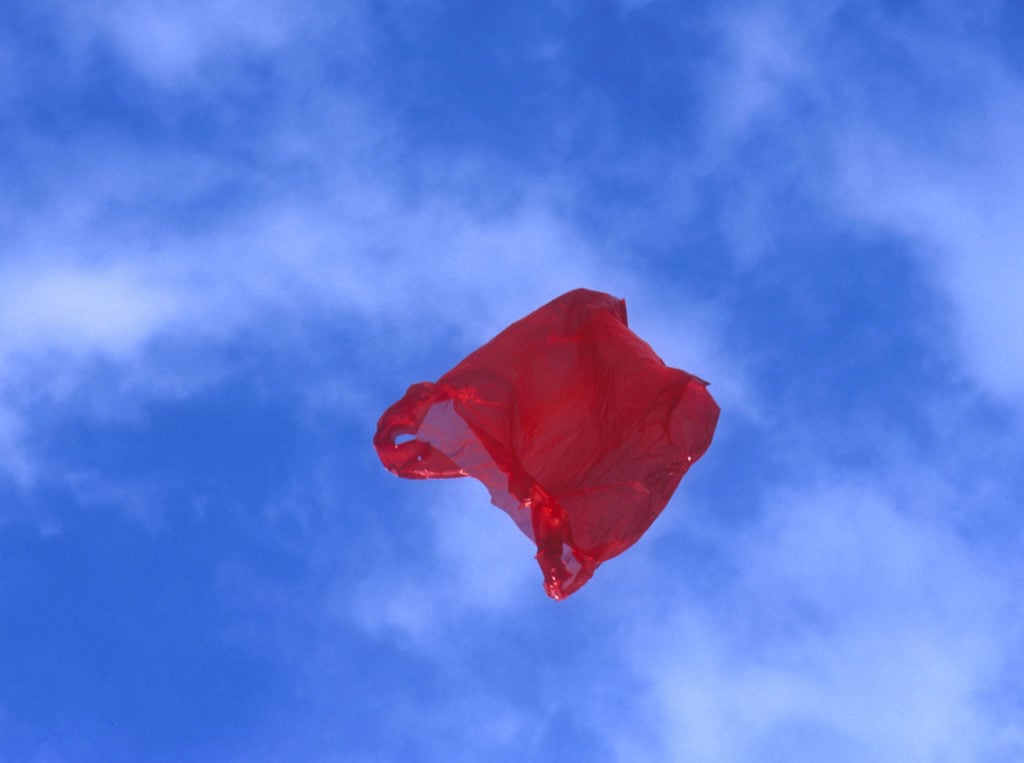
The time is ripe for an exhibition titled 'Uprisings.'

Emily Nathan

Ah, Paris: home of the philosopher-artist and the artist-philosopher; land of the cobblestones that birthed the flâneur, that most ruminative of wanderers, and inspired the likes of Gustave Caillebotte and Edouard Manet to pick up their paintbrushes. Given the city’s history, it comes as no surprise that one of its most esteemed institutions for contemporary art, the Jeu de Paume, has now devoted two of its three floors to a multi-media exhibition curated by French philosopher-art historian Georges Didi-Huberman.
On view through January 15, 2017, “Soulèvements” (Uprisings) is a thought experiment conducted through images. As its title suggests, the show’s theme is the notion of “rising up,” and Didi-Huberman tackles the many facets of that broad concept through paintings, drawings, films, sculptures, videos, installations, and archival documents, made across centuries and geographies.
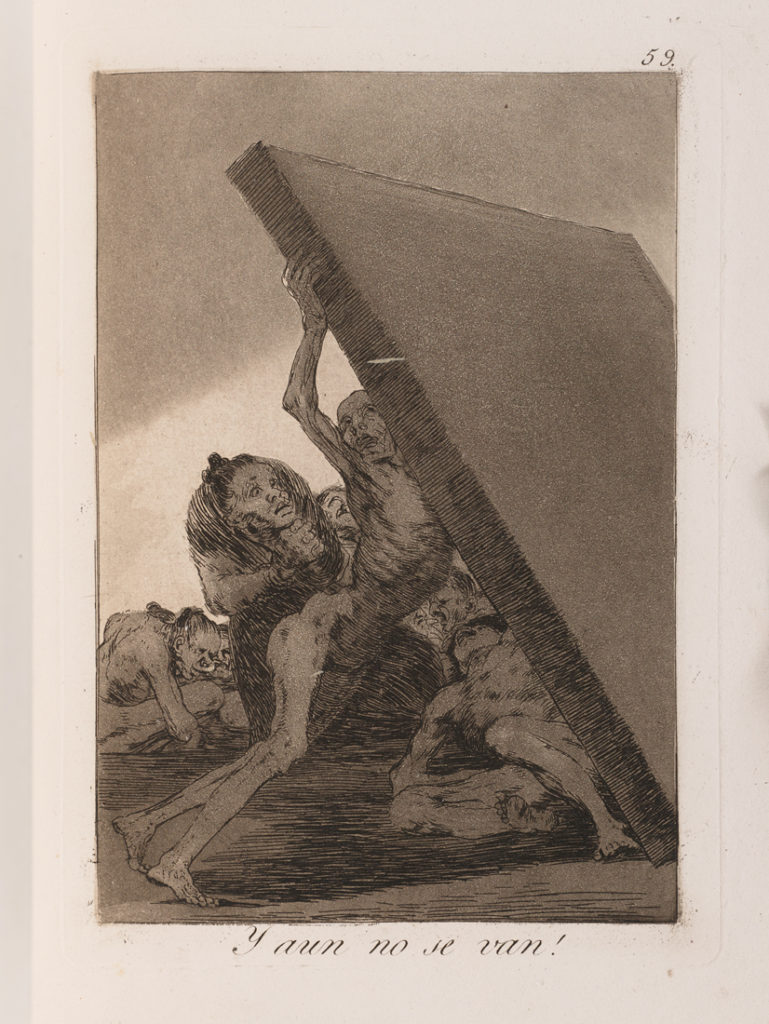
Francisco de Goya Los Caprichos (1799). Collection Sylvie and Georges Helft. Photo: Jean de Calan
Some of the works on view are anonymous, including a number of fascinating satirical cartoons and illustrations, but the majority are by renowned artists, writers, and thinkers, historic and contemporary alike: Harun Farocki, Francisco de Goya, Nietzsche, Roman Signer, Joseph Beuys, Victor Hugo, Alan Sekula, and Sergei Eisenstein make appearances, among many others.
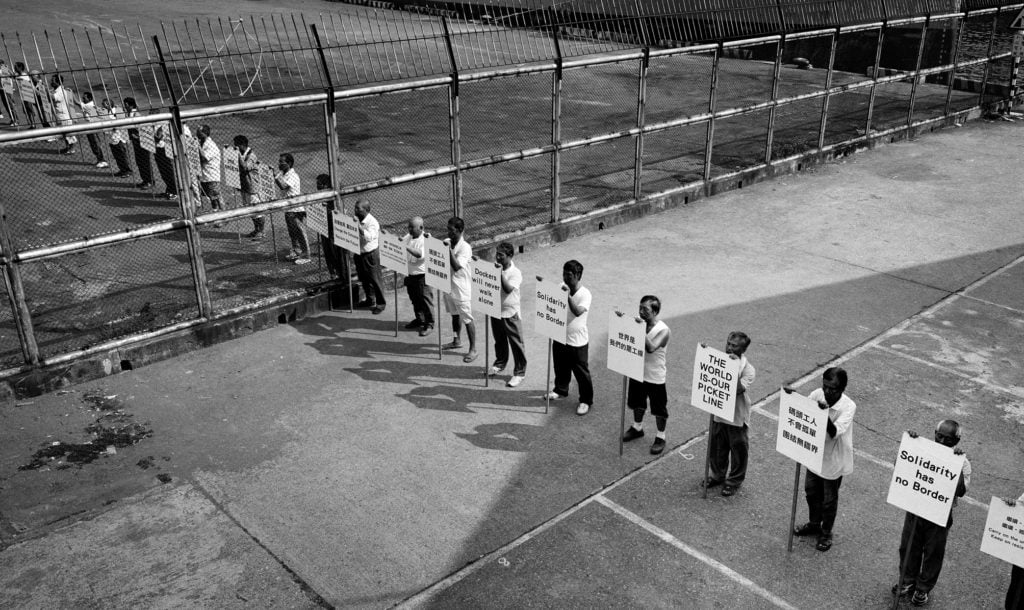
Chieh-Jen Chen, The Route (2006), Film still courtesy Galerie Lily Robert, ©Chieh-Jen Chen.
In his rather opaque introductory text, Didi-Huberman explains that his show will be organized into five categories, each one exploring a different aspect of “uprising,” from bodies that “say ‘No!'” to “barricades that are erected” and “speech that rebels.” And while poetic moments of abstraction run throughout the presentation like a current of fresh air, much of the featured work examines political revolt and is anchored in historic events or movements.
Indeed, while the show was surely planned before recent developments that have upended the globe, from Brexit to the election of The Donald, it feels almost eerily prescient as a curatorial conceit—and has turned out to be extremely timely.
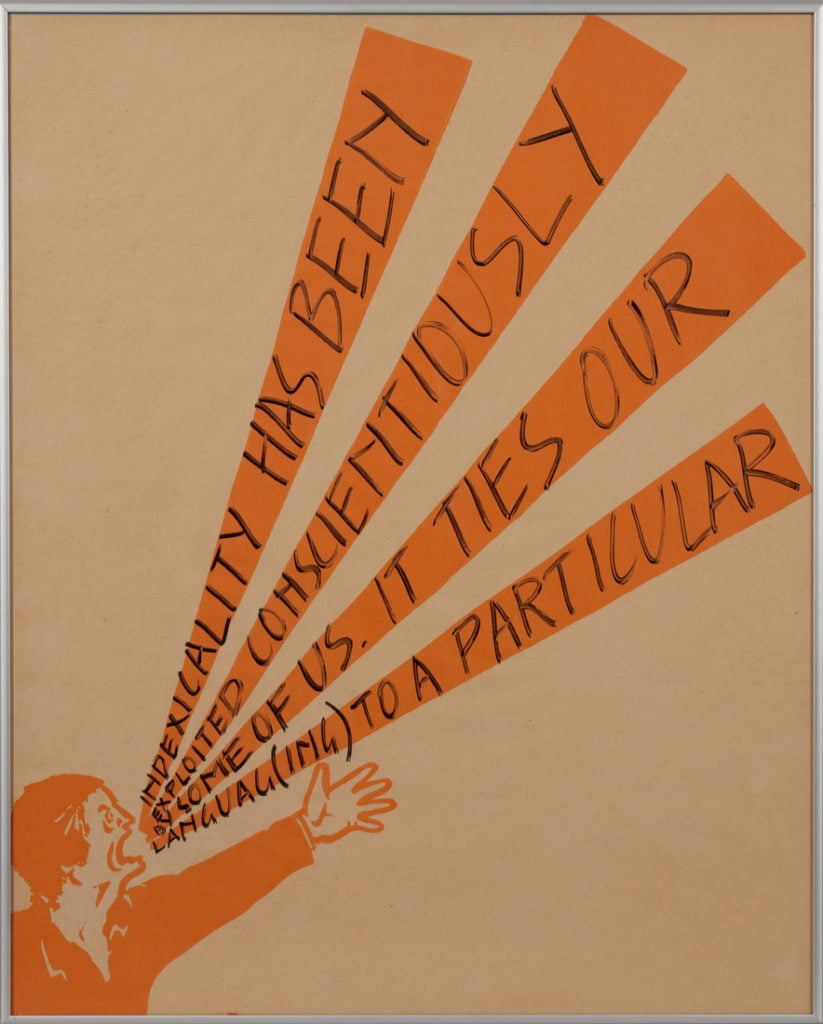
Art and Language, Shouting Men Detail (1975). MACBA Museu d’Art Contemporani de Barcelona. Photo: Àngela Gallego / ©Art and Language
It might sound like a heavy exhibition, and it is, but Didi-Huberman’s insistence that this should also be fun is set up in the show’s first gallery, which explores the activities of inanimate objects. In a bright series of 2002 C-prints by American artist Dennis Adams, a single item—a red plastic bag, a newspaper—floats aimlessly against a sapphire-blue sky, lifted on a breeze. In their simplicity, these images present fleeting moments of liberation, in which an earth-bound object gets a chance to fly, and they feel like a small acts of revolution.
This is echoed subtly by the other images in the room: a Man Ray photograph captures an insurgence of dust gathered and growing on Marcel Duchamp’s masterpiece, The Large Glass; a video installation by Polish-Egyptian artist Jasmina Metwaly offers a glimpse of Tahrir Square, symbol of the Arab Spring, through a gap in a ripped, fluttering flag, reframing the event we have all seen reproduced ad nauseum in the media through the flag’s “perspective.”
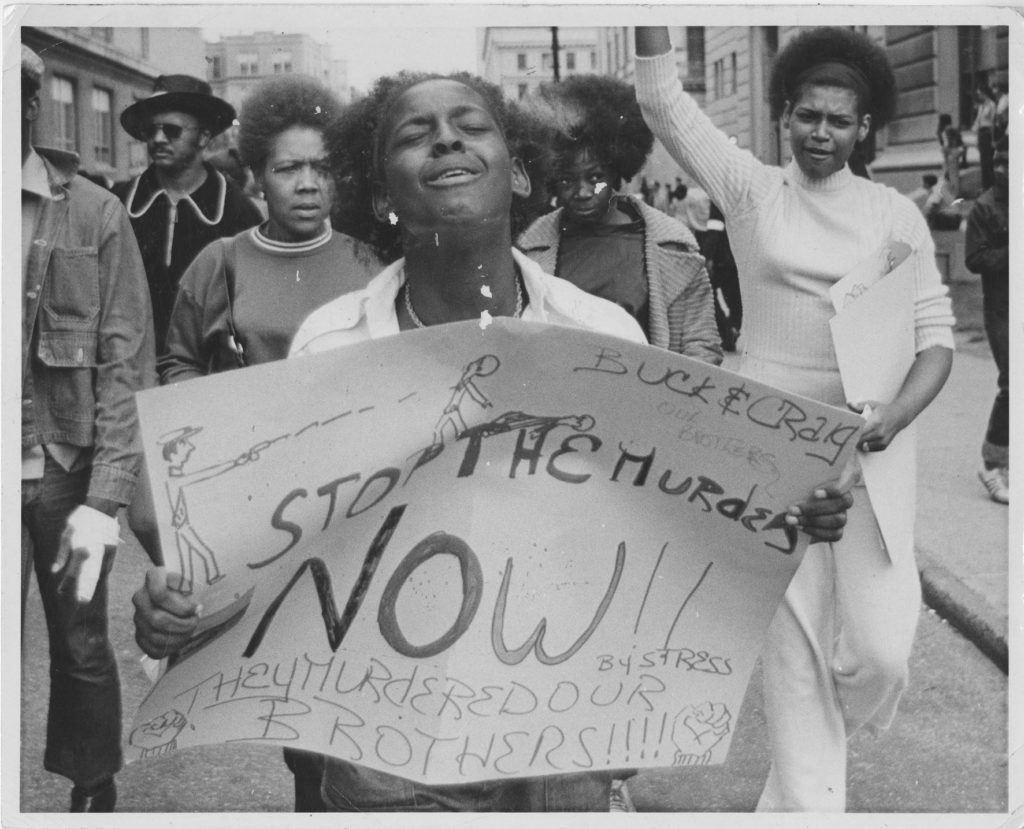
Ken Hamblin, Beaubien Street, (1971). Image courtesy Fifth Estate photo. Joseph A. Labadie Collection, Special Collections Library, University of Michigan.
Other sections of the show are rather more literal, featuring images of human bodies, arms, and mouths in revolution; Didi-Huberman even separates those distinct human faculties, devoting one room to each. We see human forms mingling with the white buds of flowers in Alvaro Hoppe’s 1984 photograph, Opposition Rally in Chile, and as small figures with upraised arms in solidarity with the Black Panthers, silhouetted against the snow in a shot by Japanese photographer Hiroji Kubota. Lorna Simpson gives us a grid of mouths humming a hymn in a 2001 video installation titled Easy To Remember, the sea of lips uniting to produce a peaceful harmony.
We also see bodies in futile acts of resistance, attempting to defy the constraints of the physical world. A 2009–10 video by performer Claude Cattelain, known for testing the limits of materials—including his own body—provides comedic relief. Titled Vidéo Hebdo 46, we see the artist building a stack of books beneath the legs of a chair he is sitting on, tilting it back with increasing precariousness and readjusting his body weight to compensate until gravity finally takes over, and the chair slams to the ground.
![Enrique Ramirez, Cruzar un muro [Passing through a wall], (2013), HD video still courtesy Enrique Ramirez/Michel Rein Gallery, Paris/Brussels.](https://news.artnet.com/app/news-upload/2016/11/Soulevements5-29.2RAMIREZ-1024x680.jpg)
Enrique Ramirez, Cruzar un muro [Passing through a wall], (2013), HD video still courtesy Enrique Ramirez/Michel Rein Gallery, Paris/Brussels.
“Soulèvements” (Uprisings) is on view at Jeu de Paume, Paris, until January 15, 2017.